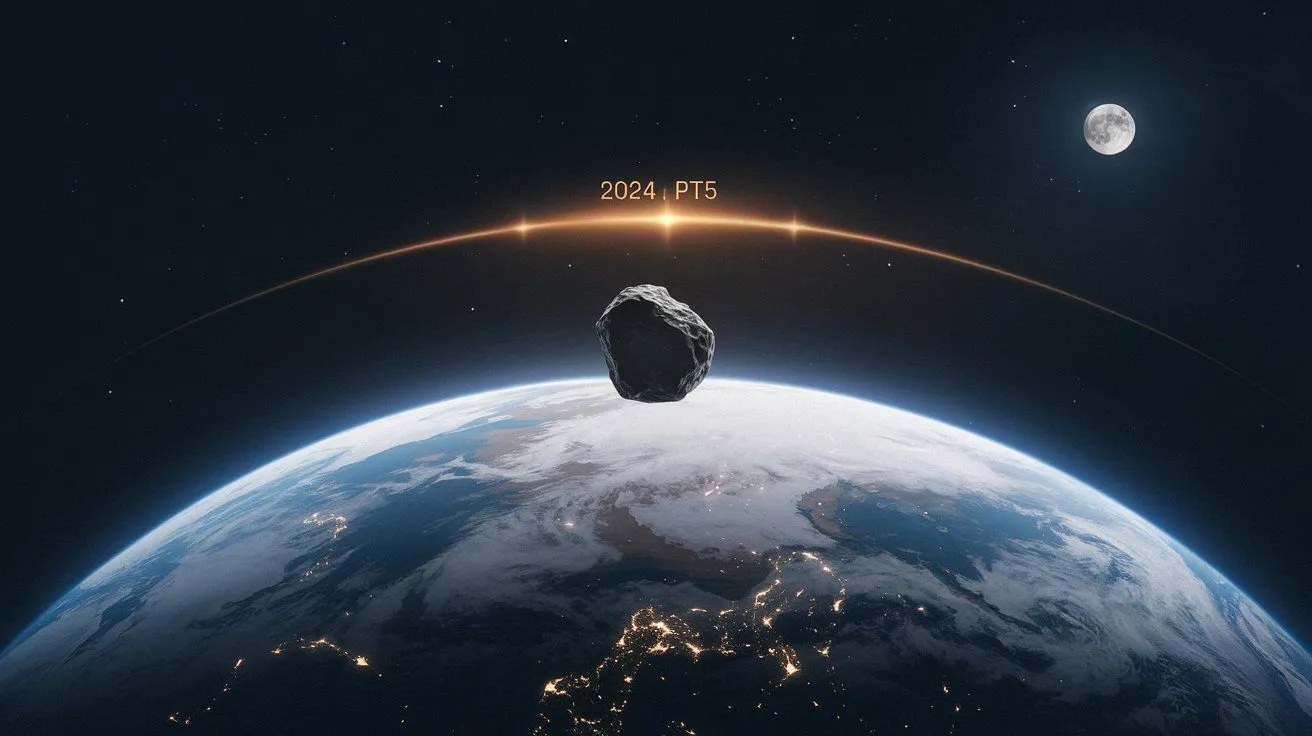Rare phenomenon: Earth will soon have two moons
Published by Cédric,
Author of the article: Cédric DEPOND
Source: Research Notes Of The AAS
Other Languages: FR, DE, ES, PT
Author of the article: Cédric DEPOND
Source: Research Notes Of The AAS
Other Languages: FR, DE, ES, PT
Follow us on Google News (click on ☆)
Invisible to the naked eye, this mini-moon will nonetheless be very real, captivating the attention of astronomers by the end of September.

Discovered last August by the ATLAS system, 2024 PT5 is an asteroid barely 33 feet (10 meters) in diameter. According to researchers from the Complutense University of Madrid, it will be temporarily trapped by Earth's gravity from September 29 to November 25. During this period, it will complete a single full orbit before breaking away for good.
Despite its modest size, this asteroid is intriguing the scientific community. While amateur astronomers won't be able to observe it without highly specialized equipment, its passage presents a rare opportunity to study an exceptional phenomenon. This will be only the fourth time Earth has hosted a mini-moon in a century.
Previous similar events include a mini-moon in 2006, which remained in orbit for nearly a year, and a more recent one in 2020. Space objects like 2024 PT5 are sometimes captured by Earth's gravity but often escape before completing a full revolution.
Researchers suggest that this asteroid may originate from the Arjuna asteroids, a group whose orbits are close to Earth's. In 2022, another similar object, 2022 NX1, also briefly became a mini-moon. Though rare, this type of asteroid is not entirely unprecedented.
For those hoping to catch a glimpse of 2024 PT5, patience is key. It will come close to Earth again on January 9, 2025, before heading back into the depths of space. After this date, its return isn't expected until 2055.
What is a mini-moon?
A mini-moon is a small celestial object temporarily captured by Earth's gravity. Unlike the Moon, it remains in orbit for only a few months. These asteroids are often small, typically several meters (a few feet) in diameter, and are hard to observe.
Mini-moons follow complex trajectories. They often come from regions near Earth, such as the Arjuna asteroid belt. While they may be captured by Earth's gravity, they eventually escape, sometimes after completing one or two full revolutions around our planet.
Mini-moons are rare. Their passages provide unique opportunities for astronomers to study small objects near Earth. Observations of these phenomena help improve our understanding of the gravitational interactions between Earth and space objects.
What is the difference between a quasi-moon and a mini-moon?
Quasi-moons and mini-moons are two types of celestial objects that interact with Earth, but their behaviors differ.
A quasi-moon (or quasi-satellite) follows a trajectory similar to Earth's around the Sun. It does not orbit Earth, but its movement makes it appear to accompany our planet for years, if not millennia. One example is the asteroid 2023 FW13, which has been accompanying Earth for thousands of years. Quasi-moons are never captured by Earth's gravity.
A mini-moon, on the other hand, is temporarily captured by Earth's gravity. It actually orbits Earth's atmosphere but for a very short time, typically from a few months to a year, before escaping. Unlike quasi-moons, mini-moons complete one or two brief orbits around the planet, like the asteroid 2024 PT5, which will remain in orbit for two months before leaving.
In summary, the main difference is that quasi-moons follow a trajectory similar to Earth's around the Sun without being trapped by Earth's gravity, while mini-moons are temporarily captured and briefly orbit Earth.